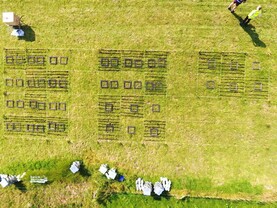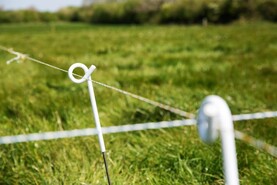Ensure you take advantage of the opportunities to spread lime as they present themselves throughout the year.
Lime can be spread any day of the year provided soil and weather conditions are suitable.
Waiting for October, November and December to apply lime can be a risky strategy as approximately 30% of our annual rainfall comes at that time of the year, resulting in less trafficable soil conditions and the opportunity to apply lime could be missed.
The following identifies a number of opportunities during the year to apply lime.
Grazing ground: once fields have been grazed off, it is an ideal time to apply lime. Earmark blocks of land that need lime based on a recent soil test report, eg this could mean ordering a load of lime (25t) after each grazing rotation to correct soil pH. Aim to avoid applying lime on to heavier grass covers (= 750kg DM/ha) as this will reduce the time available for the lime to wash off the grass and into the soil.Silage fields: ideally leave at least eight weeks between applying lime and closing for grass silage. If it gets too late to apply lime to silage fields this spring, plan to apply lime once the silage has been cut as fields will be bare and soil conditions should be good.Lime and slurry or urea: it is recommended to apply the slurry or urea first and then apply the lime seven to 10 days later, to avoid the risk of N loss. Where protected urea is used, early trial work indicates that it is safe to apply protected urea to fields that have received lime recently. Reminder of deadline for
National Liming Programme
Wet weather over the summer and autumn of 2023 significantly diminished many farmers’ opportunities to spread lime before the National Liming Programme deadline and significant numbers of farmers opted to forward buy lime for delivery and spreading in spring 2024.
Participants of the National Liming Programme are reminded to organise the delivery and spreading by 31 March 2024 of the lime they forward bought, if they have not already done so.
Ensure you take advantage of the opportunities to spread lime as they present themselves throughout the year.
Lime can be spread any day of the year provided soil and weather conditions are suitable.
Waiting for October, November and December to apply lime can be a risky strategy as approximately 30% of our annual rainfall comes at that time of the year, resulting in less trafficable soil conditions and the opportunity to apply lime could be missed.
The following identifies a number of opportunities during the year to apply lime.
Grazing ground: once fields have been grazed off, it is an ideal time to apply lime. Earmark blocks of land that need lime based on a recent soil test report, eg this could mean ordering a load of lime (25t) after each grazing rotation to correct soil pH. Aim to avoid applying lime on to heavier grass covers (= 750kg DM/ha) as this will reduce the time available for the lime to wash off the grass and into the soil.Silage fields: ideally leave at least eight weeks between applying lime and closing for grass silage. If it gets too late to apply lime to silage fields this spring, plan to apply lime once the silage has been cut as fields will be bare and soil conditions should be good.Lime and slurry or urea: it is recommended to apply the slurry or urea first and then apply the lime seven to 10 days later, to avoid the risk of N loss. Where protected urea is used, early trial work indicates that it is safe to apply protected urea to fields that have received lime recently. Reminder of deadline for
National Liming Programme
Wet weather over the summer and autumn of 2023 significantly diminished many farmers’ opportunities to spread lime before the National Liming Programme deadline and significant numbers of farmers opted to forward buy lime for delivery and spreading in spring 2024.
Participants of the National Liming Programme are reminded to organise the delivery and spreading by 31 March 2024 of the lime they forward bought, if they have not already done so.






 This is a subscriber-only article
This is a subscriber-only article










SHARING OPTIONS: